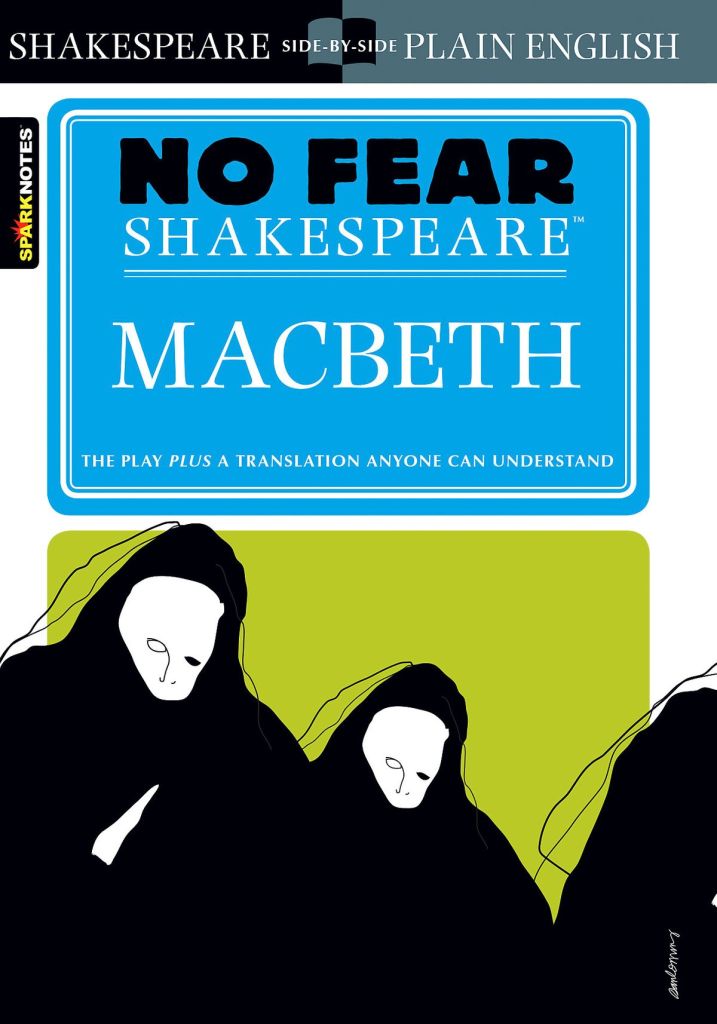As we pass William Shakespeare’s birthday, we reflect upon his plays and their readability among modern audiences. Why do some scholars and purists look down on No Fear Shakespeare, Sparknotes’ series of comprehensive Shakespeare “translations”?
It’s fascinating to think that William Shakespeare (1564-1616) significantly evolved the English language during his lifetime, introducing new idioms and even new words. He created new verbs from nouns (e.g. “to elbow”), and was especially illustrious for his mastery of insults. Yet despite his achievements in shaping the English language we use today, many people have difficulty understanding his writings.

There’s a distance between Elizabethan/Jacobean English and contemporary English, of course. So it’s understandable that reading Shakespeare requires some mental gymnastics compared to, say, reading your everyday newspaper or a new novel. This year, to honour the Bard on the occasion of his 456th birthday (presumed April 23 – he died the same day in 1616), I’d like to discuss No Fear Shakespeare.

No Fear Shakespeare is a student’s dream come true: it’s a modern-day translation, and therefore an interpretation, of Shakespeare’s plays. Published by Sparknotes and known for distinctive blue and white covers, each paperback volume includes the original text of a Shakespeare play, side by side with a modern translation. Depending on how you want to be perceived in English class, copies of No Fear Shakespeare are either coveted or derided among schoolfellows.
At least in my high school, I remember being grateful for No Fear but hesitant to be seen using it. During undergrad, I definitely wouldn’t dare flaunt a copy – to do so might be akin to admitting you didn’t understand Shakespeare. But I’ll readily admit I own copies of No Fear for King Lear, Hamlet, and The Tempest. In truth, it doesn’t hurt to have a translation available for when you’re tired or simply want to read Shakespeare for fun (don’t laugh; it happens worldwide). Literary skills aside, there’s no point pretending translations aren’t useful, no matter how clever you want to appear. Take this translation from King Lear (my favourite tragedy):
It is the cowish terror of his spirit
William Shakespeare, “King Lear”, Act IV, scene ii, lines 13-17
That dares not undertake. He’ll not feel wrongs
Which tie him to an answer.
Our wishes on the way
May prove effects. Back, Edmund, to my brother.
Hasten his musters and conduct his powers.
I must change names at home, and give the distaff
Into my husband’s hands.
He’s a coward and can’t commit himself to doing anything risky. He chooses not to be insulted rather than challenge those who offend him. But what we talked about with longing on the way may soon come true. Edmund, go back to see my brother-in-law. Gather his soldiers and organize his troops. I plan to take charge of my household. From now on I will wear the pants, and my husband can play the housewife.
No Fear Shakespeare, modern translation of “King Lear”, Act IV, scene ii, lines 13-17
Here, Shakespeare’s language may seem oblique or confusing in terms of what Goneril is saying; No Fear has brought it down to a clear-cut modern translation.
No Fear is aptly named, as people often approach Shakespeare’s writing with just that: fear, or at least a feeling of intimidation. We often fear that which is difficult to understand. But among scholars, why is No Fear tacitly shamed? Because there’s a pronounced sense of pride that comes with being able to understand, appreciate, and quote Shakespeare. I say “pride”, but in fact it reeks of elitism. No Fear Shakespeare is seen as cheating – the easy way out, as one avoids doing the bulk of the interpretation one’s self. There’s also a strong case against No Fear translations in the sense that they’ve “stripped” the plays of what makes them great: Shakespeare’s unparalleled writing style.

Shakespeare is known for his eloquence, and by interpreting his plays yourself, you can engage with them in a way that No Fear would preclude – unless you can resist looking at the translations on the right-hand side of each page. That’s why English majors don’t bring copies to their university lectures, apart from the actual optics of the thing: even though it’s available, we’d be doing ourselves a disservice by simply reading a translation, and we don’t want to look over-reliant on the watered-down No Fear. If you were to only read translations, you’d be missing the essence of Shakespeare’s writing itself, and that would be a shame.
But using No Fear doesn’t mean you’re unintelligent. As demonstrated above, it can help with those hard-to-understand passages – and I can never fault anyone who’s working to make Shakespeare more accessible. I applaud the No Fear team, because the more barriers we eliminate between people and their enjoyment of literature, the more inclusive literature can be. If No Fear Shakespeare acts as a doorway to a lifetime of loving Shakespeare and his stories, then that can only be a good thing – we should never look down on anyone trying to learn something.
After all, I first got into Shakespeare by reading kids’ comic versions of his plays, adapted by Terry Deary. Film adaptations like She’s the Man (Twelfth Night) and 10 Things I Hate About You (The Taming of the Shrew) also offer a contemporary lens. If these adaptations are successful in introducing modern audiences to the Bard, then count me in. Just don’t ever ask me to give up the real deal: Shakespeare’s words, verbatim.
